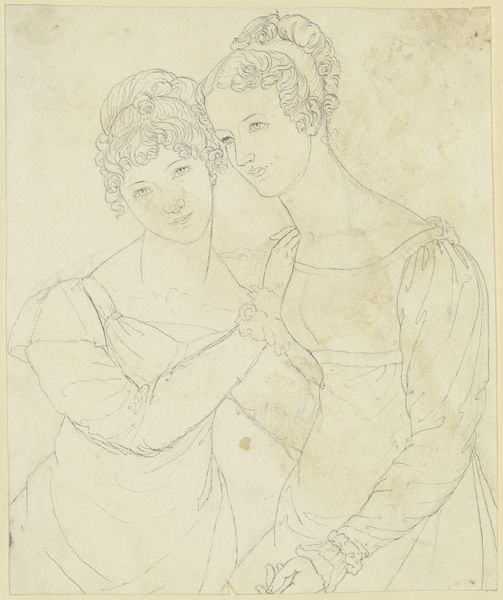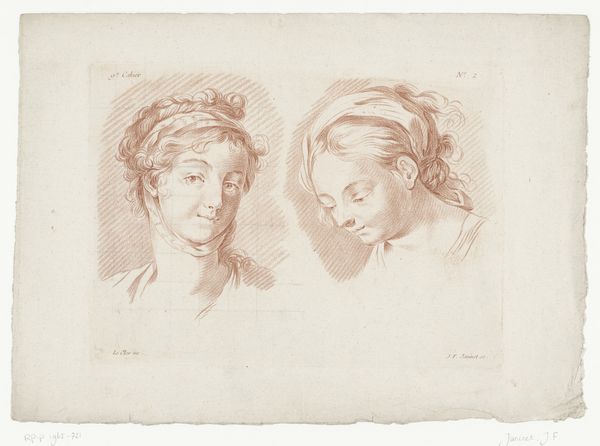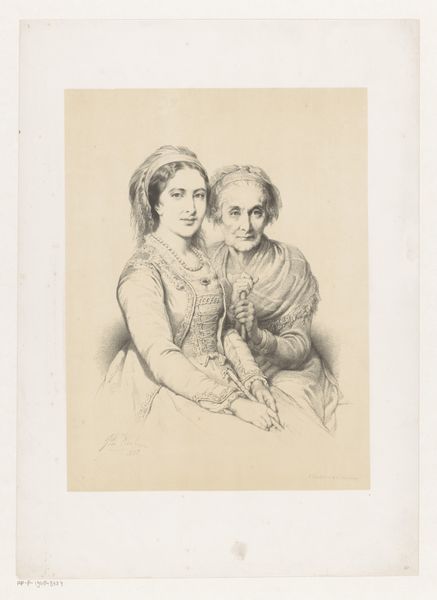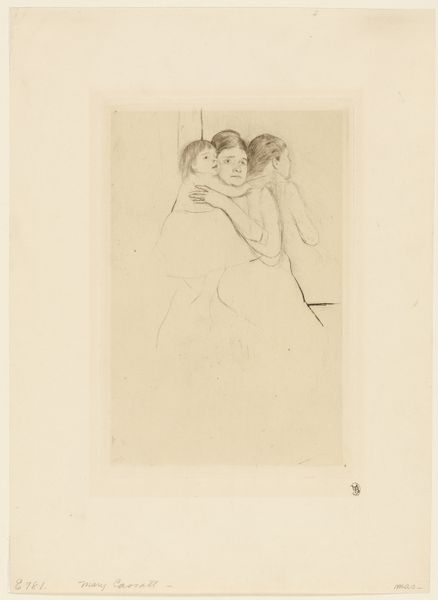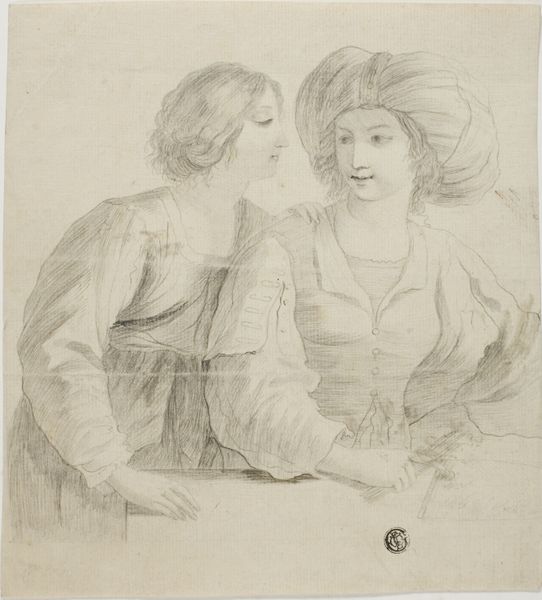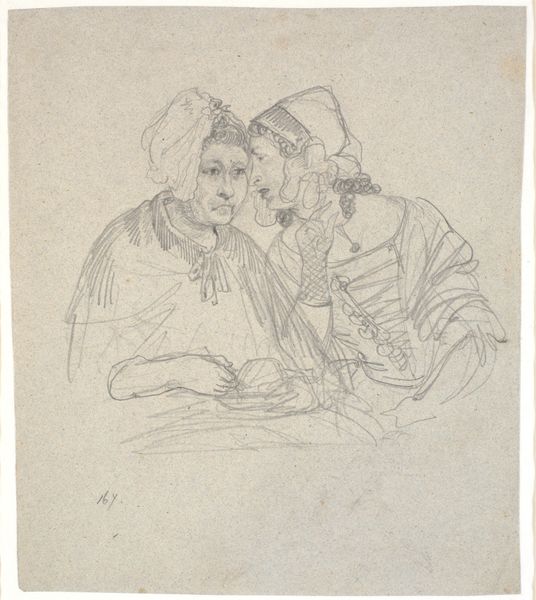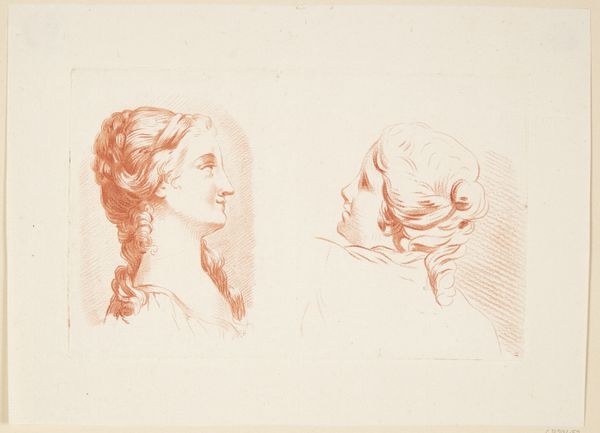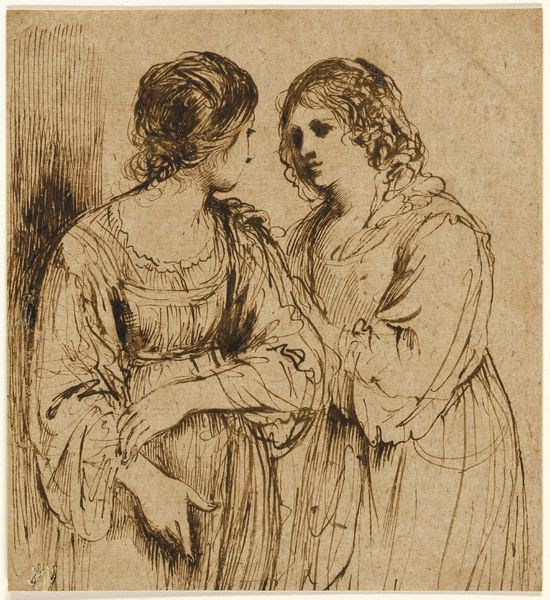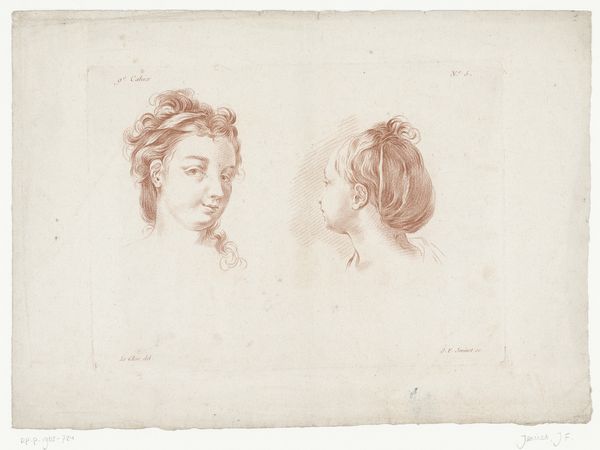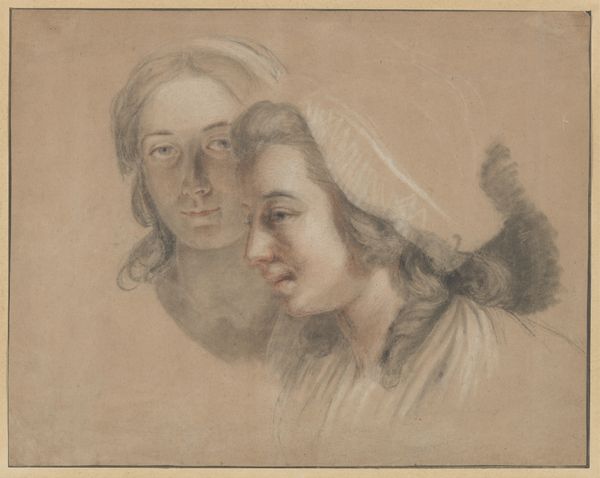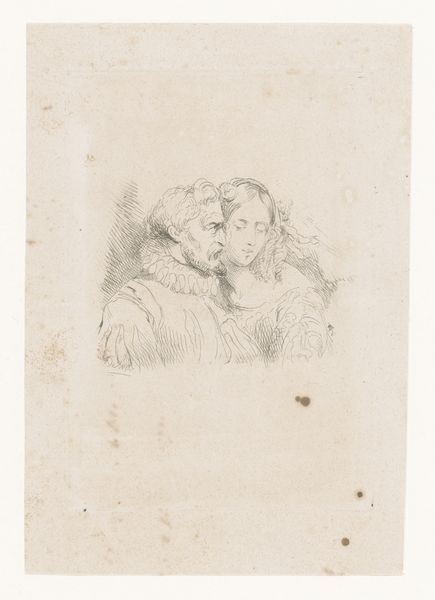![Two Women [recto] by Seth Wells Cheney](/_next/image?url=https%3A%2F%2Fd2w8kbdekdi1gv.cloudfront.net%2FeyJidWNrZXQiOiAiYXJ0ZXJhLWltYWdlcy1idWNrZXQiLCAia2V5IjogImFydHdvcmtzLzk5MmViZTM3LWVmZGEtNGM3NC1hZmY4LTA4N2M0ZTlkNDcxZC85OTJlYmUzNy1lZmRhLTRjNzQtYWZmOC0wODdjNGU5ZDQ3MWRfZnVsbC5qcGciLCAiZWRpdHMiOiB7InJlc2l6ZSI6IHsid2lkdGgiOiAxOTIwLCAiaGVpZ2h0IjogMTkyMCwgImZpdCI6ICJpbnNpZGUifX19&w=3840&q=75)
drawing, pencil
#
portrait
#
drawing
#
light pencil work
#
figuration
#
portrait reference
#
pencil drawing
#
romanticism
#
pencil
#
portrait drawing
#
fine art portrait
Dimensions: sheet: 20 × 25.4 cm (7 7/8 × 10 in.)
Copyright: National Gallery of Art: CC0 1.0
Curator: Let's discuss this compelling pencil drawing by Seth Wells Cheney, "Two Women [recto]", created sometime between 1830 and 1850. Editor: My first impression is one of fragility. The light pencil work lends a delicate, almost ethereal quality to the piece. It’s incredibly subtle. Curator: It’s certainly evocative. Cheney was working within a society that valued idealized representations of women, particularly in portraiture. This drawing presents a softer, more intimate view compared to formal painted portraits of the era. How do you see the materials contributing to that effect? Editor: Well, pencil as a medium itself speaks to accessibility and immediacy. Unlike oil paints that demand specialized skill and studio space, pencil allows for sketching and study. Perhaps this work was produced outside of the studio, hinting at a more spontaneous encounter. And it seems the type of paper itself isn't particularly fine. It is very thin, probably cheap for its time. It makes me think that this might be a sketch produced by somebody who didn't have access to higher quality tools. Curator: That’s a fascinating point about access. It’s true, portraits, even drawn ones, solidified social status. The rise of portrait galleries and published engravings shaped a broader cultural understanding of visibility and recognition. Who was seen, and who was doing the seeing? This work also prompts questions of accessibility and private display, as well as Cheney's role within that network of social portraiture. Editor: Exactly. And the very conscious choice of medium pushes us to contemplate labor. Consider the time and skill still required to achieve this level of detail, despite the unassuming material. It elevates the craft. This goes against the traditional idea that drawings are less valuable than paintings. The way that these works were consumed definitely dictated the value that society granted to their creators. Curator: I agree, focusing on labor allows for a much richer consideration of these pieces in culture and public perception. Considering its place and purpose gives it further interest, for me. Editor: Yes. These softer renderings offer, ultimately, such intriguing views on how identity was being constructed. Curator: Precisely. A study in access and intention, made possible by his skilled labor.
Comments
No comments
Be the first to comment and join the conversation on the ultimate creative platform.
